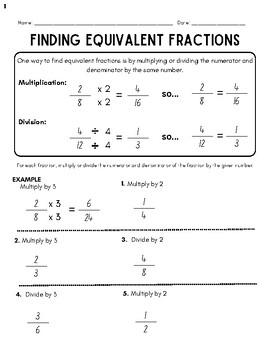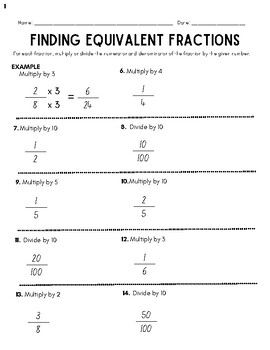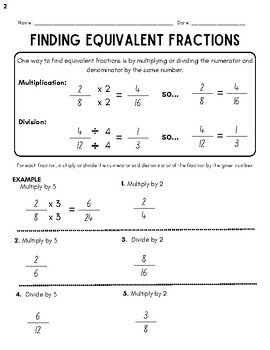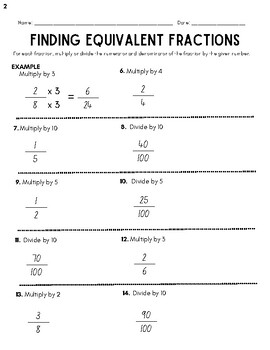Finding Equivalent Fractions FIVE DOUBLE-SIDED WORKSHEETS
- PDF
Description
Make understanding fraction equivalence EASY with these worksheets showing how to use multiplication and division to find equivalent fractions! NO PREP PRINTABLES perfect for homework, centers, morning work, tutoring, extra practice, etc.
***ONE WEEK OF PRINTABLE WORKSHEETS***
5 Worksheets BACK AND FRONT! With explanation AND example on each page
Perfect for print-and-go, especially special education students!
EXCELLENT practice for 3rd and 4th Graders! Are your students struggling to understand the relationship between fractions? Do they need practice understanding multiplying and dividing both the numerator and denominator by the same value? Are they in need of a slow entry-way to fraction equivalence?
Try these broken-down, easy-to-follow, step-by-step worksheets showing how to find equivalent fractions by multiplying or dividing by a given value. Students will develop a deeper understanding of how multiplication and division are related to fractions, and how they can use these operations to solve problems involving fraction equivalence. Use these to prep for fraction multiplication or fraction equivalence units!





